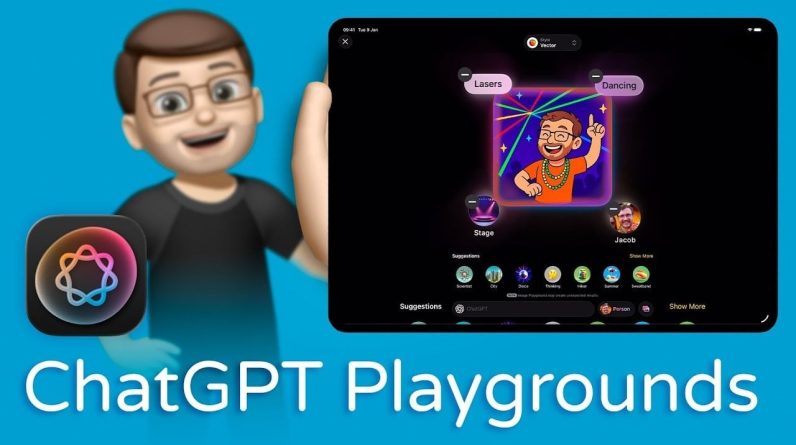When the Indeed marketing team gathered recently for an AI training session, a consultant asked a probing question: When it comes to AI, what worries you most? Perhaps surprisingly, people were most concerned about the steep learning curve.
Concerns about keeping up with AI are widespread. In the United States, 75% of workers believe the skills needed for their roles will shift in five years, according to a recent Indeed report, “Tomorrow’s World: The Workplace and Workforce of the Future.” Yet, less than half (45%) have actually been upskilled in the last three years to develop longer-term skills and learning.
AI will fundamentally change how people work, and forward-looking companies across industries are starting to treat AI upskilling as a business imperative. PwC, for one, developed a program designed to train employees in managing risks and leadership in the AI era. IKEA is bringing AI literacy training to more than 30,000 workers.
Indeed has also rolled out its own AI training programs — from AI 101 tutorials to more advanced training for software developers, who now use AI to generate a third of the company’s new code. What does it take to implement an AI upskilling program that sticks? Here’s a look at what Indeed’s experts have learned along the way.
Start by listening and don’t stop
Before implementing an AI training program, ask your team about what they already know and what they want to learn. “The first step is understanding how we can help,” said Megan Myers, Indeed’s global director of brand planning, strategy, and operations.
Myers, who for nearly two years has led AI education and adoption efforts for the marketing team, has used focus groups and Slack channels to ask employees about their AI use. The fears that surfaced in those conversations prompted her to organize a training session on the psychology of change. That’s where Uli Heitzlhofer, the talent management consultant, asked employees what worried them most about AI.
“We said, we have to directly address the elephant in the room: People are feeling anxious about what this means,” Myers said.
Facing fears head-on has helped the team move forward and build momentum. So instead of spending hours writing talking points for a deck, they might prompt Google Gemini to do it: “Give me 30 seconds of voiceover per slide — focus on decisions that need to be made in the room.”
One team member built a ChatGPT-powered agent to analyze reams of data about brand health in different markets, a task that now takes just a few minutes. AI also helped a team in one market make better decisions about where to place ads, using a tool called Claritas to more than double audience engagement.
As the marketing team’s AI use grows more sophisticated, Myers continues to survey employees to surface pain points AI might solve. That ensures that the experts she brings in each quarter to deliver training offer guidance that meets real needs.
Cover the basics, but focus on details
When it comes to using AI, employees often don’t know where to start. They know that AI is a transformational tool, but they’re looking for concrete advice on how to apply it to their jobs. Heitzlhofer, the consultant, calls it “blank page syndrome.”
“It’s like, oh my god. I’m in front of this empty page. I don’t know what to do. I’m just going to do something else,” Heitzlhofer said.
To help Indeed marketers overcome that paralysis, Myers hosts “power user panels,” where people show their peers how they’re already using AI for snackable tasks, whether it’s to summarize emails or quickly build bar charts to visualize data.
Showing people how they can put AI to practical use has been crucial across Indeed’s workforce. When Indeed first offered AI training, the company took a “broad strokes” approach, sharing AI basics, the foundations of responsible AI use, and tips for using Gemini for Google Workspace, an AI-powered assistant for Google’s suite of apps. While those basics were important, more targeted training for specific job functions has proved even more effective.
Since then, Indeed’s learning and development team, in partnership with the AI for Indeed team, has designed and developed an eight-workshop AI program for research and development executives. They developed courses for EU-based Indeedians on aligning AI with civil rights and training for managers on how to use AI responsibly to write performance reviews. These tailored efforts have helped drive adoption more effectively than a broad, surface-level rollout.
Set specific goals, but make room for experimentation
Just because you’ve built a useful AI upskilling program doesn’t mean people will flock to it. While Myers and Heitzlhofer agree that making training mandatory can backfire, it’s still important to nudge and motivate people.
Myers asks marketers to include one AI goal in their corporate commitments each year. She also challenges them to spend at least 10 hours every six months on AI learning and development, whether that includes attending Indeed’s expert training sessions or taking an outside course. “We want you to choose your own adventure with AI and get yourself comfortable with it,” she said.
While learning leaders need to help employees build confidence with AI through training and practice time, it’s up to company and department leaders to create the right environment. That means clearly articulating AI policies, then giving people explicit permission to experiment (and to fail). Heitzlhofer suggested setting up use case libraries and Slack channels or other shared spaces where employees can exchange tips and missteps. “Ideally, they’ll share these lessons with others, so collective learning is always happening,” he said.
Don’t just encourage adoption. Measure it.
Investment in AI upskilling is already paying off for Indeed. According to internal data, developers now use AI to write 33% of new code at Indeed, up from just 7% in March. Indeed aims to push that number to 50% by year’s end.
That kind of shift signals real behavior change. The true measure of AI adoption isn’t course completions — it’s about how people actually use the tools, as captured by metrics like voluntary usage, time saved, and improved quality.
Ultimately, that’s the key to long-term traction: not just delivering learning, but driving adoption. Without practical application, even the most robust training efforts won’t stick.
Better work begins with better hiring. See how.
This post was created by Indeed with Insider Studios.






